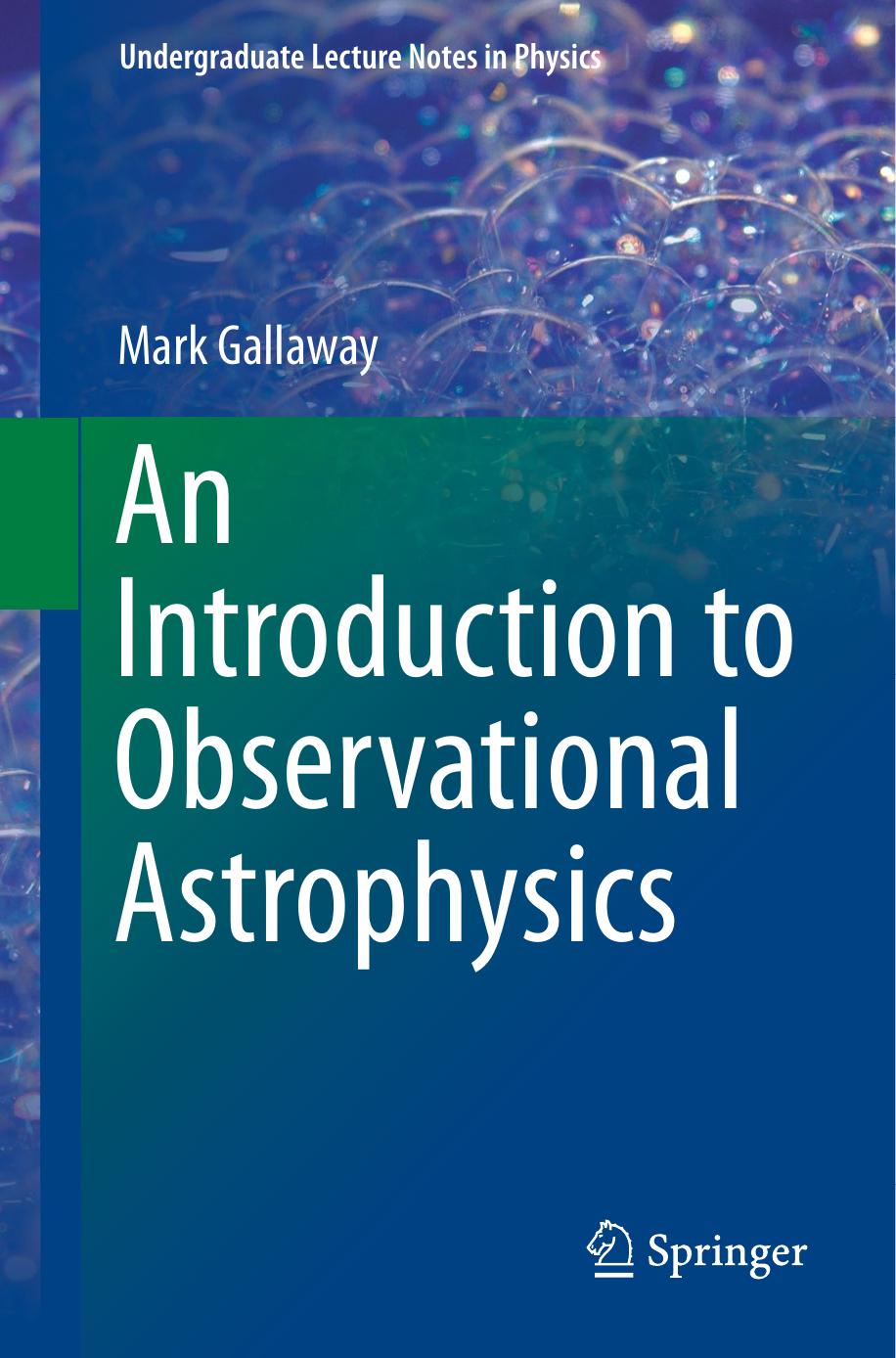An Introduction to Observational Astrophysics by Mark Gallaway

Author:Mark Gallaway
Language: eng
Format: epub, pdf
Publisher: Springer International Publishing, Cham
8.3.2 Pointing
Once you have all your calibration frames done, open the dome (assuming it’s dark). Some telescopes require you align to two or three bright stars. If you need to do this, do it now. Your observatory staff should be able to help you perform a pointing alignment if you have not done one before. Even if you don’t need to use alignment stars, it is always a good idea to check the alignment by slewing to a bright star and taking a short exposure. Centre the star in the image and, if the telescope has this ability, sync the telescope to the star. Syncing recalibrated the encoders to match the position of the target star. Sync to the wrong target can cause problems so make sure that the star your are syncing to is the one you think it is. If you can not see the star, then slew around in small steps taking images until you can either see the star or it is clear that your telescope is out of alignment. Note that you might be able to see some stray light coming from the star at the edges of the frame before you see the actual star that can provide a hint where the star is in relationship to the frame.
If you unable to find the target star with a reasonable distance the use the finder scope. Most telescopes have a small telescope with a wide field of view, co-mounted on the main telescope. These should have cross-hairs or if you are lucky, an illuminated dot, in the centre. Try placing you star in the centre of the finder scope. If you can’t see the star in the finder, you have a more serious problem but most of these are easy to resolve.
If you cannot find the target star, there are some possible reasons. You may have an incorrect RA and Dec, the time or date or location could be incorrect on the telescope controller, the telescope could have been incorrectly parked or the encoders that tell the controller the position of the telescope in Alt Az, could be offset. It should be easy to check that the time and position is correct, make sure that you are using the time without daylight saving, it is often the cause of errors.
If you can, synchronise the telescope to an RA and Dec, in addition to syncing with a known star, a process known as plate solving may help. Plate solving involved automatically identifying the stars in the image and using their relative positions matched against stellar catalogues, to determine the centre of the image, which can be used to synchronise the telescope. A number of telescope control packages, including CCDsoft and MaximDL have this feature. It is also available as online services from astrometry.net. Note that if the telescope is a long way out of focus most plate solving programs will struggle as they will be unable to identify stars in the frame. In which case you
Download
An Introduction to Observational Astrophysics by Mark Gallaway.pdf
This site does not store any files on its server. We only index and link to content provided by other sites. Please contact the content providers to delete copyright contents if any and email us, we'll remove relevant links or contents immediately.
| Aeronautics & Astronautics | Astronomy |
| Astrophysics & Space Science | Comets, Meteors & Asteroids |
| Cosmology | Mars |
| Solar System | Star-Gazing |
| Telescopes | UFOs |
Tools of Titans by Timothy Ferriss(7737)
Turbulence by E. J. Noyes(7660)
Astrophysics for People in a Hurry by Neil DeGrasse Tyson(4973)
Secrets of Antigravity Propulsion: Tesla, UFOs, and Classified Aerospace Technology by Ph.D. Paul A. Laviolette(4863)
Design of Trajectory Optimization Approach for Space Maneuver Vehicle Skip Entry Problems by Runqi Chai & Al Savvaris & Antonios Tsourdos & Senchun Chai(4807)
Room 212 by Kate Stewart(4704)
Pale Blue Dot by Carl Sagan(4573)
The David Icke Guide to the Global Conspiracy (and how to end it) by David Icke(4348)
A Journey Through Divination and Astronomy by Publishing Pottermore(4233)
Apollo 8 by Jeffrey Kluger(3481)
Goodbye Paradise(3413)
Losing the Nobel Prize by Brian Keating(3409)
COSMOS by Carl Sagan(3313)
The Five People You Meet in Heaven by Mitch Albom(3295)
Brief Answers to the Big Questions by Stephen Hawking(3218)
How to Read Water: Clues and Patterns from Puddles to the Sea (Natural Navigation) by Tristan Gooley(3210)
The Order of Time by Carlo Rovelli(3052)
How to Read Nature by Tristan Gooley(3048)
A Brief History of Time by Stephen Hawking(2796)
